A Boardgaming Life After Action Report
By Dan Burkley
Designer: Craig Besinque
Publisher: GMT Games
Inspiration
Triumph & Tragedy by GMT Games is a rare example of an excellent three-player game. Having played it a few times, I thought it could be adjusted to a five-player game and amended the rules to accommodate five players. I never had the opportunity to try it face-to-face, but when COVID-19 shut down face-to-face wargaming – why not try it as a Play By e-Mail (PBeM) game?
Rule Amendments
Results of production will be revealed simultaneously as a GM shortcut. Britain and France count their INDustry, POPulation, and RESources separately – as would Germany and Italy in a five-player game. If at war with a Rival Faction, surplus POP and RES may be adjusted between the Greater and Major powers of a Faction to optimize Production, provided a valid Trade Route exists to the needed Resources.
A Faction that receives a “Peace Dividend” of 0 will receive an Action card. Diplomacy card play was resolved in three rounds, with simultaneous card play and reveal as a GM shortcut.
For technology upgrades, an active Axis or West Faction can play one Investment card with the desired Technology to achieve that Technology, but the Soviets still had to play two Investment cards. However, the Soviets only needed one card to ‘match’ a Tech already played by the Axis or West.
I did add a couple of extra Action (“yellow”) cards and Investment (“violet”) cards to each deck.
Card hand-size compliance was divided by player: Germany 4, Italy 3, Britain 4, France 4, and USSR 6.
Only one player of a Faction may play a Command Card per season, so the teammates (UK and France/Germany and Italy) decide between them what Command card to play.
Gameboard
I used the First Edition T&T mapboard. A sufficiently high resolution image was available on the web, which allowed me to use Powerpoint to create slides and images of the board to share with players. I had originally started by setting up the game on a custom-printed extra-large map that Sean D. printed out for me, but by 1939, I was using the Powerpoint slide decks as the “game board.”
Game Blocks

I had customized my own 20mm x 20mm x 10mm blocks, card decks, Control and Influence markers for use with the extra-large T&T map, so I had these images available to use with the PBeM game.
1936
Production
All players except the German player diversified their spending. Germany invests all their 1936 production into Industry Investment cards. Since they started the game with 14 Action cards, Germany saw no need to add any more of those.
In 1936, the Axis Faction has gathered a lot of neutrals as Associates or Protectorates, including the United States. Note: Only the Western Allies can benefit from the USA as an Associate, Protectorate or controlled military satellite (with its +3 POP and +4 RES), but the Axis or USSR can still prevent that from happening. The USSR also gained neutrals as Associates, while the English gained Poland as an Associate.
Also of note is the increase in IND by Britain (+1), Germany (+2), and the USSR (+1) and Germany’s two technology achievements (LST and Motorized Infantry).
Spring, Summer, and Fall
Following the Government Phase (i.e. Diplomacy and Tech phase) is the Command Phase, where players may commit an Action card in the Spring, Summer, and/or Fall seasons to move their units.

Britain moved some of its units to secure the Middle East and Mediterranean, while the USSR invaded Persia in Fall 1936, which is defined as a “Violation of Neutrality” (VoN). The neutral deploys its military based on the size of its cities. In this case, a 2-step Fortress was deployed in Tehran. To represent “world reaction”, the other Rival Factions received Action cards based on the largest city in the neutral being invaded (2 Action cards, in this case).
The Soviets invaded from three sides, hoping to get a swift surprise victory to gain Persia’s 1 POP and 4 RES by conquest. The land areas around Tehran have mountains on their borders, limiting engagement to one unit per border. The fourth unit goes through the Caspian Sea and does an amphibious invasion (but cannot fire during the invasion turn).
The Soviets attack with a 2-step AF, 2-step AR, 2-step INF, and the amphibious 1-step INF that can’t fire this turn. The Persian 2-step Fortress fires first for 1-4, scoring 1 hit – which is taken on the 2-step AR. The Soviet AF (2 for 1’s), AR (1 for 1-2) and INF (2 for 1-3) units can only score 1 hit, so Tehran remains contested.
1937
Production
Production Levels: France: 4, Great Britain 5, Germany: 9, Italy: 4, USSR: 10
All players have diversified their production, adding to their military, adding one or more Action cards, and one or more Investment cards.
Diplomacy
The Axis influence in the Americas is canceled out, but British influence in Poland is canceled as well. Austria becomes an Italian satellite (‘anschluss’), and our Italian player, Ed, gets a 2-step unit to represent the new Austrian military allies. He chooses a 2-step Air Force unit. Italy loses its influence in Yugoslavia, but maintain Denmark as an Associate. Italy achieves LST technology. The Germans maintain their influence in Czechoslovakia, Finland and Hungary, while adding Rumania as an Associate.
The USSR maintains their influence in Bulgaria and Greece, and achieves Motorized Infantry technology.

Seasonal Command Phase
Several players start submitting “diplomatic communications” to feel out other player’s intentions. The USSR completes its conquest of Persia, and does some minor adjustments to its eastern forces. The Axis and Allies do not move any of their military forces, but the British presence in Iraq to protect its resources indicates the Allies are paying attention to what the USSR is doing.
1938
Production
Production Levels: France: 4, Great Britain 6, Germany: 10, Italy: 5, USSR: 10
All players have diversified their production, adding to their military, adding one or more Action cards, and all except Italy buying one or more Investment/Tech cards.
Diplomacy
The Axis continued their political influence of central Europe, gaining Czechoslovakia as a German satellite, Turkey as a German protectorate, and Portugal as an associate. Germany adds a 2-step MOT unit in Czechoslovakia, representing the new allied army.
The USSR counters the Axis diplomacy in Scandinavia and central Europe. Finland remains a German associate, but Sweden becomes a Soviet associate and Denmark becomes neutral.
The French take the lead for the Allies in a big diplomatic campaign that gains Yugoslavia as a French satellite, Spain as a French protectorate, and the USA as an associate, while Britain gains Poland as an associate. The French add a 1-step INF unit in Yugoslavia, representing the new allied army.
Seasonal Command Phase: The Germans Practice a “New” Form of Diplomacy
Frustrated that diplomatic means alone cannot convert central Europe to their sphere of Influence (and seeing how well the Soviets dealt with Persia), Sean D violates the neutrality of Hungary and Poland during the summer of 1938.
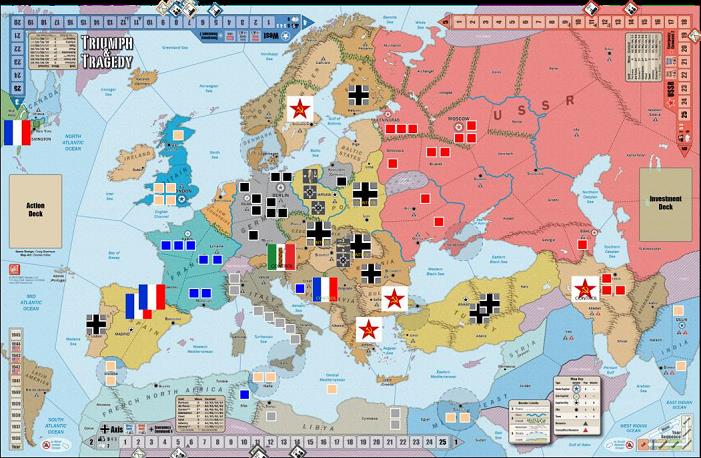
The VoN’s grant the Allies and the USSR 3 Action cards for Poland and two Action cards for Hungary. The German Blitzkrieg campaigns are well planned and the capitals of both neutrals are captured.
The Axis threats emerging in central Europe, especially the conquest of Poland and Turkey shifting more to the Axis, prompts Sean S to re-consider his strategy. With Persia conquered, the gambit to go after India is too risky, despite only one unit at the capital – since it would remove a significant part of his forces from the new threats. “Official” communications with the Allies recognize the new common threat and new pledges are made to avoid any further aggressions that might antagonize the other, so that both can “contain” the Axis. Allied communications with the Germans about the Communist threat result in a clear response that the Germans don’t give a ratz asse what the Allies think or do.
The Allies re-position their forces to implement their “containment” strategy. Note that the removal of the British unit in Iraq reflects the new “trust” between them and the USSR.
1939
Production
Production Levels: France: 5, Great Britain 7, Germany: 11, Italy: 5, USSR: 11
All players have diversified their production, adding to their military, adding one or more Action cards, and all except Italy buying one or more Investment/Tech cards.
Diplomacy
During the 1939 Government Phase, much of the diplomatic efforts by all three Factions aim to cancel key diplomatic targets. Axis influence in Portugal, Rumania, and Scandinavia is canceled out, while France adds one more influence to the USA. Italy achieves Motorized Infantry. The USSR achieves Atomic Research 1, much to the surprise of the other players.
About Atomic Research
Atomic Research is accomplished through play of Investment cards that have the Atomic Research technology. There are 4 levels of Atomic Research. Each level requires two Investment cards with the appropriate Atomic Research level, and it needs to be achieved in sequence. Only one level of Atomic Research can be achieved per game year. Each level achieved is +1VP. If Level 4 Atomic Research is achieved and the Faction has an AF unit that can reach a rival Main Capital (ie: Berlin, London, Moscow), that Faction wins the game.
Seasonal Command Phase
Seeing diplomacy failing to stop the Axis strategy of knocking off the minor countries one by one, Great Britain violates the neutrality of Norway in the Summer of 1939 (the Axis and USSR each get 2 Action cards). The Royal Navy exceeds its reputation by eliminating the Norwegian Fortification on its own after the fort reduces the amphibious British Infantry. Norway is conquered.

In the Fall of 1939, Germany violates the neutrality of the Low Countries and Rumania (Allies and USSR each gain 4 Action cards). The Rumanians make the Germans pay the maximum price, but the Germans eliminate all resistance and conquer Rumania. The Low Countries also exact a heavy toll on the invading Germans and survive the initial assault. The Low Countries are contested at the end of 1939.
The USSR uses 1939 as a re-building year to strengthen its military. The new Action cards from Allied and Axis VoN’s are welcome additions to their hand, allowing them to use more of their upcoming 1940 Production on their military.
Europe at the End of 1939
Norway: British-controlled (conquest)
Yugoslavia: French-controlled (satellite ally)
Austria: Italian-controlled (satellite ally)
Czechoslovakia: German-controlled (satellite ally)
Hungary: German-controlled (conquest)
Poland: German-controlled (conquest)
Rumania: German-controlled (conquest)
Persia: USSR-controlled (conquest)
The Changing Value of Action Cards
With eight neutrals controlled by various factions, and the Low Countries invaded by Germany, Action cards that bear the names of these countries no longer have any value politically – though they can still be used as a Command card. That cuts down the political value of Action cards by about half, as 11 neutral countries remain that can be politically influenced.
If They Can’t Be Swayed Politically, Conquer Them
The German “juggernaut” against the neutral countries continues, demonstrating the fragile nature of politics. Unless you can politically dominate a neutral (two Influence or more), it is still prone to invasion by another Rival Faction. All three Factions have recognized this by now – and all have practiced it at least once.
1940
Production
Production Levels: France: 5, Great Britain 8, Germany: 11, Italy: 5, USSR: 12
All Factions focus on their military, but the USSR picking up 7 Investment cards signals a big push for IND and/or technology.
The big secret of Sean S’s USSR strategy is that he has Atomic Research 1 achieved, but he’s holding one Atomic Research 2 and two Atomic Research 3 cards at the start of 1940. If I were in Stalin’s shoes, I would buy a large number of Investment cards, too. Hopefully, he gets to play Atomic Research 2 in 1940, and Atomic Research 3 in 1941. Then you have 6 turns to search out the Atomic Research 4 cards and play them to reach the Atomic Victory condition (assuming nobody gets a Military Victory).
Unfortunately none of the 7 Investment cards have Atomic Research 2. Ironically, one of the German Investment cards pulled in 1940 turns out to have Atomic Research 2. Missed it by this much… Sean responds to the unfortunate draw by claiming he will shoot all his scientists. Funny how history repeats itself (after reminiscing Stalin’s purge of his army officers)…
But Sean’s luck is not all bad: one of his new Investment cards is a Coup card, which allows him to remove all Influence markers in any one neutral country (except the USA) – and Sean knows exactly where such a diametric change in politics is needed – Turkey. This may turn out to be a good turn after all…
Diplomacy
Both the Allies and the USSR enjoy significant to fantastic political success.
France achieves Air Defense Radar which is a great defensive technology for your AF units. France also gains the USA as a satellite ally, with the POP, RES, and military unit benefits, although US units cannot be moved out of the US until the West is at war with the Axis or USSR.
The USSR also achieves Air Defense Radar. Turkey becomes a USSR Associate. The Germans prevent Sweden from becoming a USSR Protectorate, but Finland becomes a USSR Associate, and the USSR prevents Portugal from becoming an Axis Protectorate. The USSR also reduces French influence in Spain, reducing it from a French Protectorate to a French Associate – showing that this is still a 3-sided game.
This shift in politics across many of the neutral countries demonstrates how the German violation of neutrality in the Low Countries and Rumania in 1939 has come back to bite them in the form of “world reaction”. Those bonus Action cards to the Allies and USSR from the VoNs generate a lot of opportune plays during 1940.
But if you start to believe that the Axis have been put in their place in 1940, think again…
Germany invades Denmark and Turkey in the Spring of 1940 (those Germans always seen to have a “Plan B” ready for every diplomatic scenario that doesn’t go their way). The VoN of each grants the Allies and USSR 4 Action cards each. Denmark is swiftly subdued and the Germans finish their conquest of the Low Countries. The Germans use their LST technology to land two units at Sinope (east of Ankara), in preparation for a bigger operation against Ankara. These units are strategically placed to counter any possible USSR intervention. A Turkish 3-atep Fortress is placed at Ankara, a 2-step Fortress in placed at Istanbul, and a 1-step Fortress is placed at Izmer.
The Allies also play a Command card for Spring 1940, but if they had entertained the idea of intervention in the Low Countries before the Germans finish their operation, the timing of the Command card is too late. (The Axis H-6 Command card goes before the Allies P-5 Command card.) Instead, the British re-position a few units to block any approaches from Axis-held Northern Europe to protect London or Paris.
The Axis and USSR each play a Command card for Summer 1940. The Axis C-6 card goes before the USSR P-8. The Germans execute the 2nd Phase in their invasion of Turkey, engaging and eliminating the Fortress at Ankara. Turkey is conquered – but wait, there’s more. The Germans also violate Sweden’s neutrality (2 more Action cards to
the Allies and USSR), but despite a well-conceived 3-prong attack by land, sea, and air the Swedish Fortress just hangs on.
Святое дерьмо!
That’s “Holy Crap!” in Russian. Things were really starting to look up, and now Denmark and Turkey are Axis-controlled and Sweden is just about to fall! There was an opportunity to intervene by landing some units at Ankara and cut-off the Germans at Sinope by occupying the Black Sea.
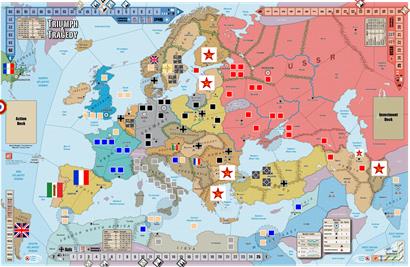
Our British player, Russ, also saw a similar opportunity to de-rail the German conquest by occupying Adana, but his Summer Command cards were U-8 and V-7, which were unlikely to go before whatever card the Axis played.
Is the situation in Sweden worth intervention (and declaring war on the Axis)? Not really, but if the USSR had gone before the Axis, intervention in Turkey was a much better proposition (but would still be a declaration of war on the Axis, opening up a wide front and relying on a good “first strike” to best use the “Surprise Attack” rule for a DoW).
Instead, the USSR now had to figure out how to respond to a rapidly deteriorating Eastern Europe. Recalling many of the units from Persia and re-deploying the Moscow reserves, Sean S positions the Red Army for what looks to be a showdown with the Axis.
But that “showdown” doesn’t happen in 1940: All factions pass in the Fall Command Phase.
Europe at the End of 1940
Norway: British-controlled (conquest)
USA: French-controlled (satellite ally)
Yugoslavia: French-controlled (satellite ally)
Austria: Italian-controlled (satellite ally)
Czechoslovakia: German-controlled (satellite ally)
Denmark: German-controlled (conquest)
Hungary: German-controlled (satellite ally)
Low Countries: German-controlled (conquest)
Poland: German-controlled (conquest)
Rumania: German-controlled (conquest)
Turkey: German-controlled (conquest)
Persia: USSR-controlled (conquest)
1941
Production
Production Levels: France: 5, Great Britain 8, Germany: 12, Italy: 5, USSR: 13
The USSR picks up 9 Investment cards, looking for Atomic Research 2. It doesn’t happen (and the rest of the physicists, scientists, lab assistants, technicians, glass-blowers, and anybody else who spoke highly of them last year are all shot), but there are plenty of other useful technologies the Soviets can benefit from and they can increase IND with them.
Let’s take a “snapshot” of how large each faction’s military is:
France: 22, Great Britain 32, Germany: 34, Italy: 28, USSR: 35
The Axis possess a modest advantage in military and production. They have “changed the rules of politics” by conquering neutral countries at about two a year for the last three years, but they are clearly the “center of attention” by the Allies and USSR.
There are still a few neutral countries of significant value to influence, and the Allies and USSR remain diplomatically active. The Baltic States become a satellite ally of the USSR, and Spain sees plenty of French, Italian, and Soviet influence, resulting in Spain leaning towards the USSR as an Associate. The French cancel out the Italian influence in Portugal, while Latin America becomes a British Protectorate.
Diplomacy
Britain achieves the Naval Radar technology (Royal Navy Fleets fire before fleets without Naval Radar). France achieves Improved Artillery technology (French INF fire before other INF without this technology). The USSR achieves Air Defense Radar and Improved Armor (Soviet Armor fires before other armor without this technology).

Seasonal Command Cards: ♪“Let the Good Times Roll…”♫
The Allies and Axis play Command cards for the Spring of 1941: Axis G-6, Allies K-5, USSR pass. Axis go first.
Germany invades Bulgaria and Greece, while finishing up the operation in Sweden. All three countries are conquered in the Spring (Allies and USSR gain 2 Action cards each for the VoNs against Bulgaria and Greece). The Allies are next and move several units to the Mediterranean. Whether this is part of the Allies “containment” strategy or staging moves against Italy or the Balkans is unclear.
Only the Axis play a Command card for Summer: C-4. Italy moves four units to the Black Sea area and Cyrenaica. These are the first Italian military moves outside of their colony or home territory.
Again, only the Axis play a Fall Command card: M-6. Germany invades Finland (one Action card to the Allies and USSR), while additional Axis units move to sites near the Soviet borders. The operation against Finland is executed with two weak MOT units, but the odds are in their favor that they can conquer Finland – and at this point, they have been on a good roll – so they give it a shot with some element of risk.
The operation ends up looking like a re-run of The Gang That Couldn’t Shoot Straight : Neither the Finnish Fortress or the German MOT units can score a hit, so Finland fights off the Germans to a stand-still (very similar to their historical performance against the Soviet in the fall of 1939).
The Axis continue their successful “Domino” campaign against the neutral minor nations of Europe, but not much activity by the Allies, and none from the Soviets. What’s up with that?
What’s up is that the Allies and USSR have gained new Action cards from the German VoNs and have been saving them up, apparently for use in 1942. Extra Action cards mean they can spend 1942 Production on military units and/or Investment cards.
The Allies do not seem interested in starting a war, but want to be ready if the Axis start a war with the Soviets. The Axis (and especially the Germans) have been sticking it to almost every Soviet diplomatic attempt to influence a neutral nation. Poland and Turkey have been “absorbed”, extending the Axis/USSR borders from the Baltic to the Caucasus. Occupation of Finland would extend it to the Arctic, leaving Baku and Leningrad extremely exposed.
The Soviet position sure looks like the Axis have it in for them, but at what point do the Soviets make a move? Some might have suggested way before this point – which can be discussed later, but let’s look at this point in time…
Europe at the End of 1941
Norway: British-controlled (conquest)
USA: French-controlled (satellite ally)
Yugoslavia: French-controlled (satellite ally)
Austria: Italian-controlled (satellite ally)
Bulgaria: German-controlled (conquest)
Czechoslovakia: German-controlled (satellite ally)
Denmark: German-controlled (conquest)
Greece: German-controlled (conquest)
Hungary: German-controlled (satellite ally)
Low Countries: German-controlled (conquest)
Poland: German-controlled (conquest)
Rumania: German-controlled (conquest)
Sweden: German-controlled (conquest)
Turkey: German-controlled (conquest)
Baltic States: USSR-controlled (satellite ally)
Persia: USSR-controlled (conquest)
1942
Production Levels: France: 5, Great Britain 8, Germany: 13, Italy: 5, USSR: 13
All players build up their military. The Axis need more Action cards to continue the VoN “Domino” strategy that’s been working well this game, while the Allies and USSR pick up some Investment cards in addition to increasing their military.
1942: After Production.
Let’s take a “snapshot” of how large each faction’s military is in 1942:
France: 24, Great Britain 38, Germany: 42, Italy: 30, USSR: 46
The Axis have a modest advantage in military and production. They have been the pace-setters for the last three years and have conquered eight neutral countries and gained three other neutrals as allies. The Allies and USSR players have no illusions who is leading the game at this point. Left to their own strategy, the Axis could win the game without having to declare war if their IND values outpace the Rival Factions – yet if the Axis want to pursue a Military Victory, The USSR’s two sub-capitals are only a short distance away from the Axis border.
The USSR had been playing a good diplomatic game, which was undermined completely by the German strategy of simply conquering neutral countries at the rate of two to three per year. The impressive acquisition of POP and RES in the 1930’s has been cut down. Atomic Research has been frustratingly elusive, so the Military Option is all that is left to them as a winning strategy.
The Allies are not in as deep a bind as the USSR. While modestly successful diplomatically, the Allies have gained quite a few “Peace Dividends” that add up to +5 VPs. While convinced that the Axis are ahead in VPs, the Allies and Axis are quite close in VP totals (as the Axis only have +1 VP in “Peace Dividends”).
The Allied strategy is not to start a war, but be in a position to finish one.
Britain achieves the Atomic Research 1 technology (Hey, it’s worth +1 VP!).
The USSR achieves LSTs (Funny how the Axis & USSR end up with the amphibious technology).
Italy achieves Improved Artillery (Italian INF/MOT fire before other INF/MOT without this technology)
Spring 1942: “It’s the Duty of Every Soviet to Kill the Hun.”
Command Card Play: Allies: pass, Axis: E-5, USSR: B-4. Soviets go first.
The USSR issues a Declaration of War (DoW) against the Axis and declare an Intervention in Finland. Two Soviet units enter Finland to engage the Germans (and get the Surprise Attack bonus on the turn the DoW is declared), while two Soviet MOT units conduct an amphibious invasion of Sweden. The surprised German MOT units are taken out by the Finns and Soviets before they can fire. The invading Soviet MOT units in Sweden cannot fire on the turn they land, but the defending German Air Force (AF) unit fails to score any hits. Air and/or Naval units alone in a land area with enemy ground units present must re-base. Our German player, Sean D, re-bases his AF unit to Denmark.
Despite the sudden reversals in Scandinavia, once again, the Germans have a “Plan B” ready to execute: Axis forces in Turkey counter-attack in Georgia and Persia, while one of the German MOT units in the Low Countries re-deploys to Warsaw as a reserve. The battle in Georgia results in small losses on both side, but the battle in Tabriz, Persia, results in a bloodless Axis victory.
Summer 1942
Command Card Play: Allies: W-7, Axis: V-8, USSR: M-10. Soviets go first.
The Soviets follow-up on their Scandinavian offensive by attacking Denmark, while other units rally to Georgia and Baku. Denmark is captured after swatting aside the weak Luftwaffe unit there, and the Germans are driven out of Georgia with losses.
The Germans respond with a counter-thrust into Kiev and Odessa, while the Axis invasion of Persia continues to Tehran, as a well as a bid for Baku. The Ukraine is only lightly held by 1-step INF units, which is enough to keep Kiev disputed, but Odessa falls to the advancing Germans. The Italian MOT units makes quick work of the Soviet INF unit at Tehran (thanks to Improved Artillery), but the Soviet MOT unit at Baku puts up a stiff defense, leaving Baku disputed. Persia is conquered by the Italians in a bloodless victory and unblemished record.
The Allies do not join the war, but move assets from Britain to Gibraltar and nearby seas, while troops from Suez head off to Karachi.
Fall 1942
Command Card Play: Allies: G-8, Axis: pass, USSR: pass. There’s a surprise: Neither the Axis or the USSR has a Fall Command card!
The Allies don’t join the war, but declare a violation of neutrality against Spain. The operation involves almost all Allied fleet and air force units with four steps of British infantry (and it’s a good thing they brought four steps of INF). The Spanish 3-step Fortress at Madrid gives an excellent account of itself, eliminating three steps of British infantry. Fortunately for the Allies, the navies step up and take out the Fortress, allowing the remaining 1-step British infantry to capture the capital. Spain is conquered by the Allies.
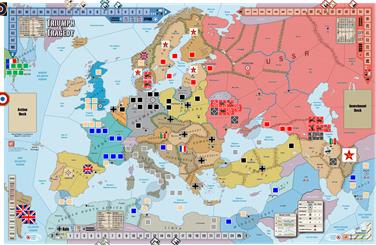
Winter 1942
Only the Soviets can play a Winter Command card (which can be any Command card), but only units in the USSR can move (within the USSR only) and only battles in the USSR can be fought. The Soviets counter-attack at Kiev and Baku with overwhelming force. The Soviet armor scores some hits in both battles, prompting the Germans to retreat from both areas before the infantry hordes are able to attack.
Europe at the End of 1942
Norway: British-controlled (conquest)
Spain: British-controlled (conquest)
USA: French-controlled (satellite ally)
Yugoslavia: French-controlled (satellite ally)
Austria: Italian-controlled (satellite ally)
Persia: Italian-controlled (conquest)
Bulgaria: German-controlled (conquest)
Czechoslovakia: German-controlled (satellite ally)
Greece: German-controlled (conquest)
Hungary: German-controlled (satellite ally)
Low Countries: German-controlled (conquest)
Poland: German-controlled (conquest)
Rumania: German-controlled (conquest)
Turkey: German-controlled (conquest)
Baltic States: USSR-controlled (satellite ally)
Denmark: USSR-controlled (conquest)
Finland: USSR Ally by Intervention
Sweden: USSR-controlled (conquest)
1943
Production Levels: France: 5, Great Britain 10, Germany: 13, Italy: 5, USSR: 12
All players build up their military, plus the occasional +1 or +2 Action or Investment cards. Let’s take a “snapshot” of the size of each faction’s military is in 1943.
Military (* including Fortress units):
France: 28, Great Britain 46, USA: 18, Germany: 38, Italy: 35, USSR: 51
Military (excluding Fortress units):
France: 18, Great Britain 33, USA: 12, Germany: 32, Italy: 32, USSR: 48
1943 Diplomacy Phase: No more words. Draw your sword!
Politics? What politics? The only card plays were Investment cards.
Unlike all the prior turns, the 1943 Government Phase lasted only one round. All Factions passed in Round 2.
Great Britain achieved LSTs.
Germany achieved Air Defense Radar and Improved Artillery.
Italy achieved Air Defense Radar.
Unlike any other Triumph & Tragedy game I have played, this game featured the most technologies achieved in total, and all players had at least two to as many as five technologies.
The Allies look ready enough to jump into the war. The “Spanish “exercise” took out a 3-step British INF unit in 1942. Would Russ miss it in 1943?
Spring 1943: “I’m Not Done With You, Yet!”
Command Card Play: Allies: N-4, Axis: J-5, USSR: F-5. Soviets go first.
Left with an unsatisfied feeling after the Germans fled in the face of the 1942 Soviet Winter campaign, Sean S, followed-up with a Spring campaign to take care of some unfinished business.
The Soviets chased down the Germans in Kars and Tabriz and launched a new attack into Poland at Lvov. The Soviet armor made short work of the German motorized infantry at Tabriz, while the Soviets and Germans fought to a stalemate at Kars. The hastily-built German Fortress at Lvov fell, but took a Soviet with him.
The Germans counter-attacked at Lvov and overran the Soviet INF unit there (thanks to the newly achieved Improved Artillery). The last surviving Germans from the ill-fated Baku campaign (currently in the Caspian Sea) regrouped in Tehran.
Our Italian player, Ed, made an eye-opening strategic move by transferring all three units in Libya to Turkey to back-up the collapsing Axis campaign in the Caucasus.
Russ (Britain) and Fred (France) “looked” at each other and say “Did you just see that?” This prompted Neville Chamberlain to call for a “Strategic Meeting by Committee” to decide just what to do about that. The three-day meeting with three-hour patisserie and four-hour “tea time” breaks encouraged bold moves and grand-sweeping strategies, after which British and French units mobilized to the Central Mediterranean and Malta from Southern France and Spain.
Summer 1943
Command Card Play: Allies: T-8, Axis: K-9, USSR: J-8. Soviets go first.
The Soviets put forth a focused effort to recapture Persia and take out the last significant Axis force in that area. It was carefully planned and covered all approaches to prevent any Axis forces from retreating in the upcoming combat. A combined arms effort with Air Force, Armor, and Infantry descended upon Tehran.
The newly built Italian Fortress fired first, but results are disappointing. The Soviet air force was next, followed by the advancing armor, but only two hits are scored from 10 steps worth of units.
The reduced Axis force (less than half the attacking force in size) desperately fought back, scoring two hits. The Soviet INF that amphibiously attacked through the Caspian Sea cannot fire this round. The Soviets renewed their engagement at Kars, but the German armor made a “strategic redeployment” to Sinope before the Soviet infantry could fire.
The Germans responded with new attacks into Russia at Belorussia and Kharkov, while the new “Italian Army in Turkey” went after the Soviets at Kars that chased away the German armor. The Italians maintained their battlefield reputation earned during this game, as the AF and MOT units scored four hits, eliminating the Soviet MOT units before they could fire back (thanks to Improved Artillery).
At Belorussia, the Soviet AF retreated to Leningrad, but the German 2-step AR and 4-step MOT took out the 2-step Soviet INF before it could fire (thanks again to Improved Artillery).
At Kharkov, two German 4-step INF units from Odessa engaged 3 Soviet units: 1-step AR, 2-step AR, 1-step INF. Sean S decided to retreat his Soviet armor units to Stalingrad and Bryansk. The German INF attacked first (because of Improved Artillery) and wiped out the remaining Soviet INF unit.
“Now is the time!?”
This was just the type of knock-down, drag-out fight that Neville Chamberlain wanted to see between the Axis and the Soviets. Ever since the “War in the East” began, the Allies were waiting to see the death and carnage on the scale being seen now. This was the moment they were waiting for. The Axis army in Tehran is on the verge of extinction, and the Germans and Italians are hashing it out with the Soviets along the rest of the front. The Low Countries and North Africa were bare after the Axis transferred their units to fight in Russia and Turkey.
“One more turn…”
Instead, the Allies staged more of their forces from London to Paris, Paris to Marseilles, Gibraltar to Malta, and Malta to Iraq.
“Sudden Death Victory”
Now the Axis players started communicating to each other: The way the board stood at the end of Summer 1943, if the Axis went first in the Fall, they could win the game by capturing Baku and Moscow! (Military Victory: A Faction that controls two Rival Main Capitals/Sub-Capitals at the same time wins the game immediately.) They want to play their earliest Fall Command card. There is not a wide selection to choose from, but Fall D-7 looked like a pretty good card to play right now.
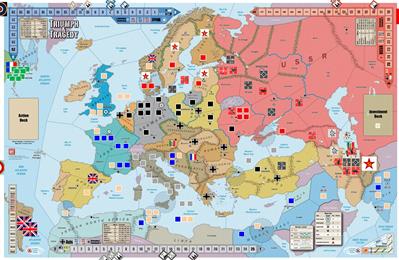
If you remember back in 1942, both the Axis and the USSR had no Fall Command card to play. Sean S had a tough choice to make – Do the Axis have a Fall card?
- If they don’t, then the USSR can correct this vulnerable situation and attack the Axis.
2. If the Axis have a Fall card, it will certainly go before the USSR’s Fall Z-6 card. If Sean plays the Fall Z-6 card and the Axis play any Fall Command card, the Axis could win the game.
3. If the Axis have a Fall card, Sean could play a Command card that is out of season (he has a Summer A-6 card). This is permitted as an Emergency Command. An Action card for the wrong Season has an Emergency Command value of two (four for the Axis). Units activated by Emergency Command cannot enter Enemy Territory nor resolve Battles this Season. The Command Priority [letter] cited on the card still applies (if tied, the opponent chooses Command Order). This would allow Sean to block the two areas that the Axis could take to capture Baku and/or Moscow, but the Axis could still cause a lot of trouble – but he still can play a “Winter” card, when no one else can. Only an Axis Fall A-# card can beat his A-6 card.
The aggressiveness of the Axis generated a series of battles in the summer of 1943 that resulted in some gaps in the Soviet front lines, such that Baku and Moscow were vulnerable to capture.
1943 Fall
Command Card Play: Allies: J-7, Axis: D-7, USSR: Z-6. Axis moves first.
The Axis captured Moscow and Baku, earning a sudden death military victory.
Post-Game Comments
Axis Strategy
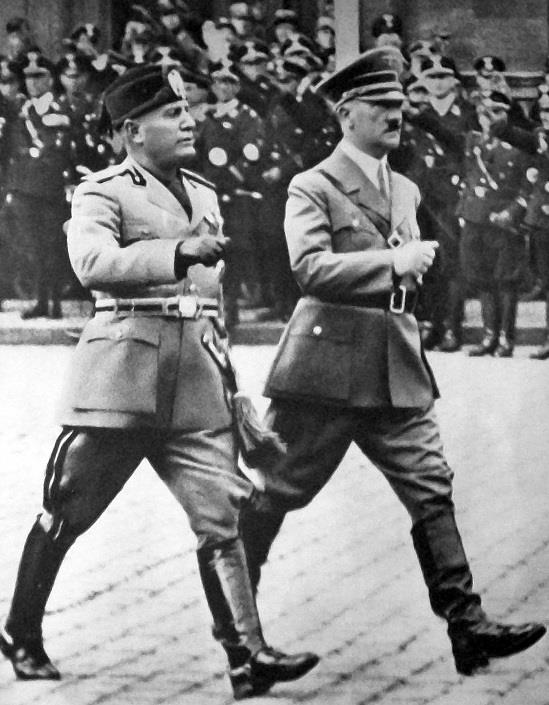
From my perspective, the Axis appeared to have a very flexible strategy that served them well. When the political strategies were failing, they resorted to conquest of the neutral countries that mattered most to them or were prone to becoming Allied or USSR satellites (which was particularly effective in 1940 and 1941). As long as all Rival Factions were at peace, those Axis-controlled neutrals add their POP and RES to the Axis (and took them “out of play” as far as the other Rival factions were concerned).
The VoN grants cards to your opponents, which appear to be more valuable in the early game, but after a significant number of neutral countries are controlled (by either means), the Action cards don’t have as much “political power”, although they can still be used as Command cards.
The Italian player, Ed, was concerned about the Allies achieving an Economic Victory, and was justified in that concern. The Allies collected the most “Peace Dividends” for a total of +6 VPs. The USSR collected +3 VPs in “Peace Dividends”, while the Axis had only +1 VP in “Peace Dividends”. The “path of Peace” just wasn’t paying out enough for the Axis to be competitive, so it’s no small surprise that they took the “Pac-Man” approach and started gobbling up neutral countries.
The invasion of Poland was well-timed and executed in one season, preventing any interference or intervention. The operation against Turkey was bold and risky, as it required at least two seasons to complete the conquest. Both the Allies and the USSR had opportunities to interfere at that point, but neither Faction communicated with the other about it, in spite of agreeing to “contain” the Axis in earlier communications. The moment arrived, opportunities to intervene were declined, and the Germans completed their conquest in two seasons.
“So Far, So Good”: The occupation of central Europe, the Balkans, Poland and Turkey (and avoiding war with a Rival) was quite a feat from my perspective. Scandinavia was the next logical target. I had wondered how far the Soviets had to be pushed and/or provoked into declaring war. Finland was that “point of no return”.
Despite the Soviets crushing the weak German army in Finland and taking all of Scandinavia from the Germans, the Axis always seemed to have a game plan and fought their Soviet Campaign well.
USSR Strategy

Sean S was the solo player for the USSR Faction. While familiar with “block” games, this was his first opportunity to play T&T, and I thought he played extremely well. The USSR’s bold move to take Persia in 1936 could have spun the game in a very different direction if it succeeded in 1936. The USSR has the opportunity and means in 1936, but I don’t consider it a “standard play” for the USSR, as it could prompt the Allies and the Axis to consider the USSR as the “greater threat” early and often.
Sean was well aware that this was a three-player game, and while most of his card plays were in his own interests or anti-Axis, he threw in a few key spoiler plays against the Allies.
The conquest of Poland by Germany might have been the first casus belli for the USSR to declare war, but certainly by the time Turkey was invaded, the USSR probably should have declared an intervention by declaring war on the Axis. The Allies did show interest in spoiling the invasion of Turkey by the Axis, and they might have “dog-piled” on the Axis at that moment if the USSR intervened. Allowing the Axis to occupy Poland and Turkey placed both Soviet sub-capitals in danger – and by then, the Axis game-plan was not much of a secret.
I don’t fault Sean S for exploring the Atomic Victory option for the USSR. He had Atomic Research 1, one card for Atomic Research 2, and two Atomic Research 3 cards. He purchased 16 Investment cards to try and get another Atomic Research 2, and didn’t get the luck of the draw. He also didn’t get any Atomic Research 4 cards, either. He did increase his IND and achieved some technologies, so the purchase wasn’t completely for naught. I had never seen the Atomic Victory option actively pursued and I was really curious to see how the other players reacted if Sean had found another Atomic Research 2 card.
If the USSR waited too long to declare war on the Axis, the timing was right when they did. It crushed the German army in Finland without loss and took Sweden and Denmark to boot (also without losses).
The Axis responded swiftly with a new campaign in the Caucasus with multiple goals: Persia, Baku, and/or Delhi. Both sides were evenly matched in 1942, but when Germany gained Improved Artillery (and Italian units starting appearing that already had this tech), the Axis gained an offensive edge over the Soviets and started winning a greater number of battles. Both sides exercised good judgement on when to retreat from battles.
Chamberlain (left) and Daladier (right) with the rest of the ‘committee.’
Allied Strategy
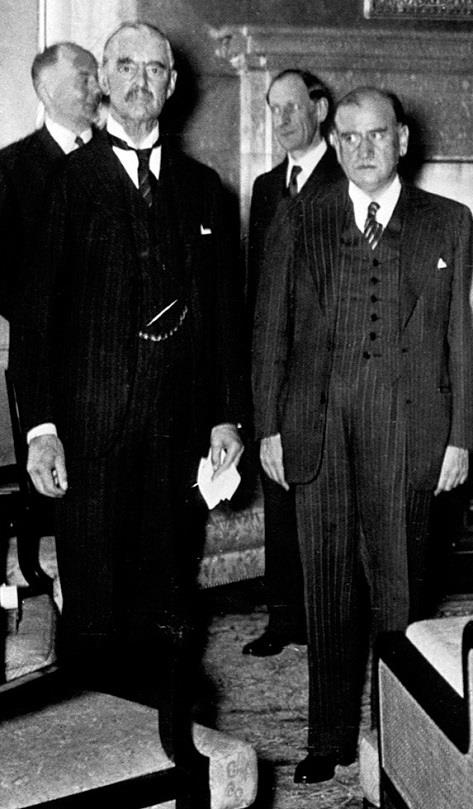
Allied strategy could be considered to be a “reactive” strategy, because in the early years the Allies don’t seem to have much and really needed to sense the other Factions’ strategies (and keep as many neutral countries “in play”). For this game, the Allies could be accused of “sitting this one out”, but let’s look at this further. They competed well against the Axis and the USSR as far as a “peaceful” strategy goes, while protecting themselves against any potential military threats and the USSR’s invasion of Persia in 1936 was definitely an “uh oh” moment. Any Faction needs 25 VPs to claim an “Economic Victory.” Let’s look at how the VPs were playing out for each Faction in the last two game years:
End of 1942: Allies: 22, Axis: 18, USSR: 16
Fall 1943: Allies: 22, Axis: 19, USSR: 14
As you can see, the Allies were closest to winning the game by an Economic Victory. I don’t know if they knew how close they were – but the Axis were definitely concerned about an Allied Economic Victory, so they probably welcomed the war with the USSR when it happened and drove for a Military Victory. An Allied DoW on the Axis would give then a -1 VP penalty (one of the reasons the USSR went down in VPs from 1942 to 1943), so they may have delayed entering the war for that reason. Was that a good enough reason for the delay?
A Faction that can demonstrate a total of 25 VPs at the start of a New Year (Victory Check) wins immediately. A Faction’s total Victory Points (VPs) equals:
• Current Production Level (including Blockade effects),
• +1 VP per Atomic Research level Achieved,
• +2 VPs per Enemy Main Capital or Sub-Capital controlled,
• + Peace Dividend values,
• minus 1 VP per DoW initiated.
Production Level counts towards the VP level, so as long as the Allies were at peace, they needed to increase their IND and POP only (as RES is not factored in until at war with another Rival Faction). The Allies continued to build up their IND until 1943, but had the potential to increase it further. They also had Atomic Research 1 for +1 VP, and +6 VPs in “Peace Dividends” — I misspoke about the Allies having +5VP in Peace Dividends in 1942. The Allies did not get a Peace Dividend in 1943 because they conquered Spain in 1942, but they could gain another “Peace Dividend” in 1944 if they did not commit a DoW or VoN in 1943.
What Worked
I thought the five-player game went very well. I hope the players all felt the same way. The PBeM format kept me busy, but I was happy with the progress of the game. All the players had questions, most of which were covered by the rules. I’m willing to do this again (or the 1939 scenario), but I’ll let the next guy volunteer for the next PBeM game…
With five players, France and Italy received more attention and vested interest as Major Powers, although they were not as “productive” as their Greater Power allies. One could argue if being on a team is better than going solo as a Faction. I gave the USSR a slight advantage for achieving technology: The Soviet player only needed one Investment card with the technology to be achieved if that technology had already been achieved by another player, but that does not apply to Atomic Research.
Shortened Diplomacy Phase
I purposely made the Government Phase a 3-Round process, with the original rule that if all Factions passed in a round, that would end the Government Phase right then and there. That worked for me, and it added a “fog-of-politics” (FoP) element (pun intended). Players could still card count, since updated slides indicated card plays.

What was not shared with all players was any “bonus” Action cards granted to a Faction from a “0 VP” Peace Dividend (a new rule approved by all the players). Since this happened after hand-size correction, the bonus Action card could be held over to the next turn or used later in the current turn.
Rule Questions
Late in the game, the rules about “control” were tested. The first sentence was found to be… not so absolute, and the term “phase” was ill-defined.
Land Area Control – Area control is evaluated at the start of a phase (see 6.0) and does not change during that phase. Passing through an area does not alter its control. Land Areas are always controlled by a Faction (Neutral Nations are considered separate independent Factions). The sum of all Friendly-controlled Land Areas is termed Friendly Territory. Likewise for Rival/Enemy/Neutral Territory, etc.
Occupied Land Areas are controlled as follows:
• [Occupation] Land Areas occupied by a single Faction are controlled by that Faction.
• [Ownership] Land Areas occupied by more than one Faction are Disputed and are controlled by the Faction which has been there longest, termed the Owner (11.54).
Unoccupied Land Areas are controlled as follows:
• A Faction always controls the unoccupied Territory of its Great Powers (USSR, Germany, Britain).
• All other unoccupied Land Areas are controlled by the Faction controlling the Capital of that Nation or Colony.
Capitals are controlled as follows:
• Factions have default control of their own Powers’ National/Colonial Capitals unless marked with a Control marker.
• Control markers are placed on Capitals when they become controlled by Occupation, Ownership or Diplomacy (8.2), unless default control applies.• Control markers exert control until removed when a different Faction gains control of the Capital.
During the second Soviet invasion of Persia, Soviet units started the season at Tabriz (in Persia) and were part of a well-orchestrated attack on Axis-held Tehran, such that the Axis units could not retreat during combat. The rules clearly state that there is a “Movement Phase” followed by a “Combat Phase.” Tabriz was USSR-controlled at the start of the turn by occupation at the start of the turn, but at the start of the “Combat Phase” was it now controlled by the Axis? Unoccupied areas controlled by the Faction that controls the capital, Tehran. Technically and literally, that would be “yes,” but that causes some problems in the Combat Phase that I didn’t think should happen.
Another example of the first sentence not being absolute is the actual occupation of unoccupied areas, cities, or capitals during the Movement Phase. Control should occur immediately, but technically and literally, that doesn’t happen until after the “Movement Phase” has been completed. Fortunately, this didn’t create a significant problem.
“Dice” Rolls
I used a 48-card deck for each player’s “d6 rolls” as a “closed system” (while rolling d6’s represents an “open system”). By the time of the 48th “roll,” the probabilities had been normalized for each player — i.e.: they would have had eight 1’s, eight 2’s, eight 3’s, eight 4’s, eight 5’s, and eight 6’s. This added an extra level of assurance that each player had equal opportunities for “good” and “bad” rolls. The neutral countries also shared a 48-card deck as well.
Achieved Technology
In the original board game, when a technology is achieved, one of the cards is displayed on-table by that Faction with the named technology achieved.

That actually takes that card out of the game, never to be available for any other Faction (and the
other technology on that card is also taken out of play). I followed this rule for this PBeM game, but then it dawned on me that more cards are actually taken out of the game, because I allowed technologies to be achieved per player (vs Faction). Since I used slide decks and displayed the technologies on them, I would place both cards back in the Investment deck in a future game.
Why? I think it was tough enough to go after an Atomic Victory. Taking cards out of the game when achieving technology could exile one or more Atomic Research cards, making it impossible to achieve an Atomic Victory.
Yes, I checked the technology achieved by all players. Atomic Research 2 was not among them.
Added Cards
I added a couple of extra cards and removed a couple of “Intelligence” cards for the 5-player PBeM game. One added card allowed the French, Italians, or Soviets to build their units up to 4-steps (normally, these countries are restricted to 3-step units). The Allies found one, but did not use it to “upgrade” the French units. This is why my customized block labels have an off-colored “4” on the French, Italian, and Soviet units.
I added two Action cards that had multiple seasons, so they could be used for either season listed. The original Action deck has significantly more Summer Command cards than Spring or Fall. Action cards lose some of their value later in the game as more neutrals become controlled, but still have value as Command cards. I felt sympathy for the player that had five Action cards and all of them were “Summer,” so that’s why I added a couple that were more flexible to use.
What Was Less Than Optimal
The Allies tended to make decisions “by committee,” which sometime prolonged their response for the next phase in the game, while others were itching for the next step to be processed. This was infrequent, so shouldn’t be interpreted as something that “didn’t work.”
Assembling slides with ALL the units revealed was a request by several players (and I could see why), but this was not part of my normal process – i.e.: I did not have such a slide, ever, during the course of the game. I had slides for each player and eventually went to “team” slides with both members’ units displayed, but as this is a “block” game, the main map did display all units – but not identify them, except when any were engaged during that year. So when players wanted a series of slides showing ALL the units and what they were, I compromised by creating ONE slide per year that showed all the units of all players.
Final Thoughts
This did require significant time and organization, but I did have a blast putting it on. I hope it was as enjoyable for the players as it was to see you ponder, scheme, and wage politics and war on each other.

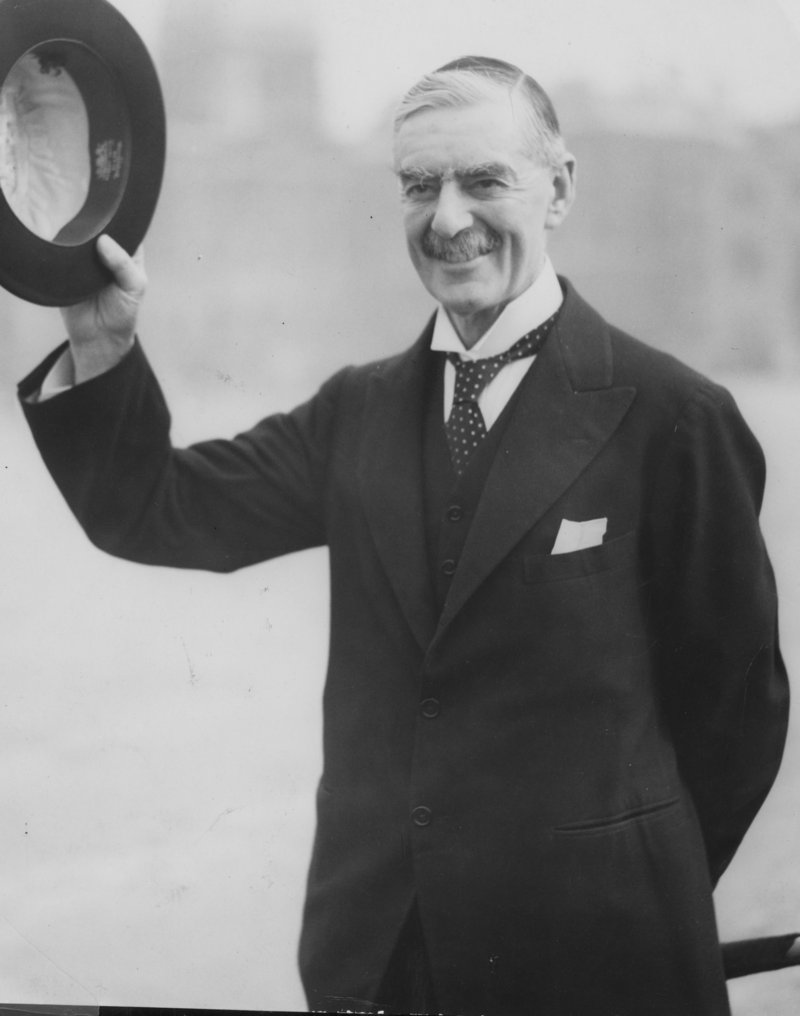



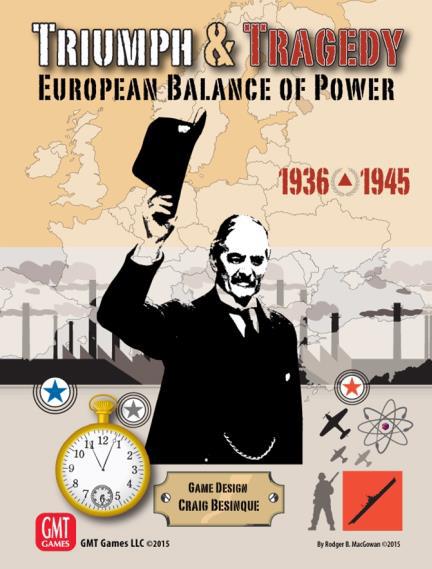
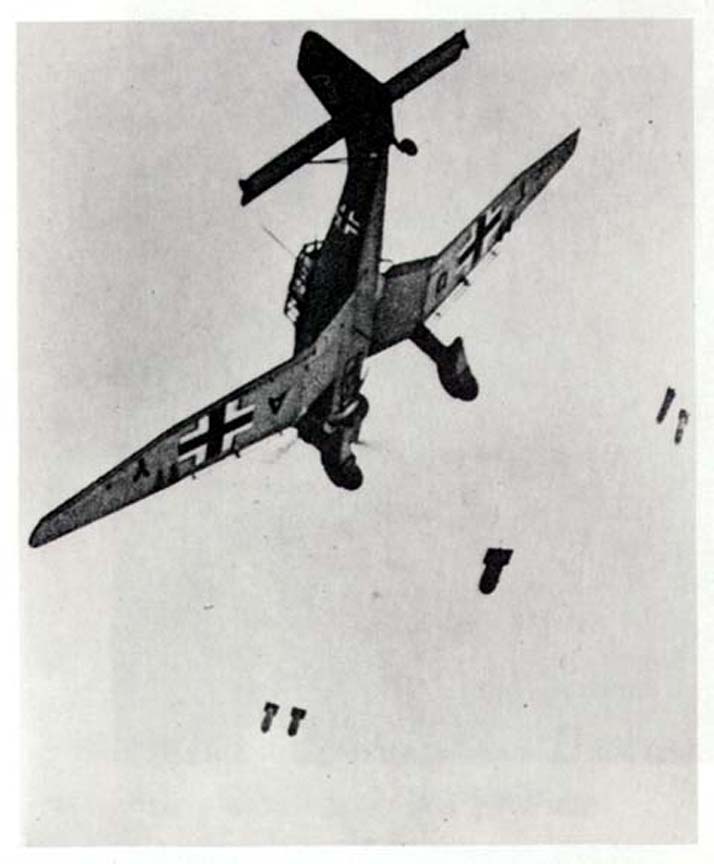
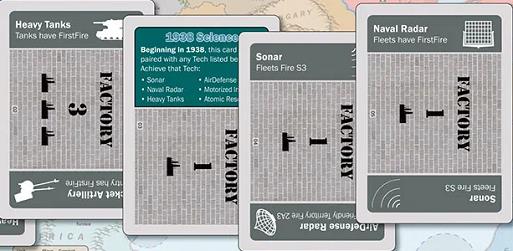
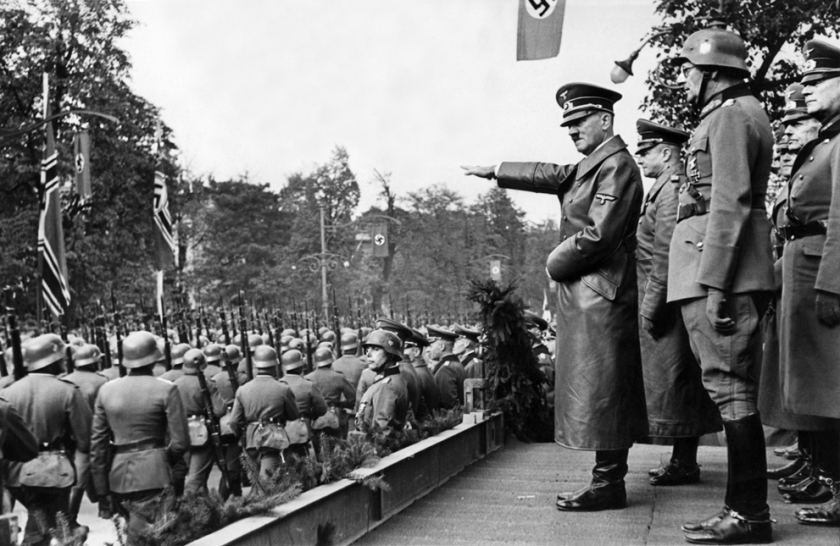
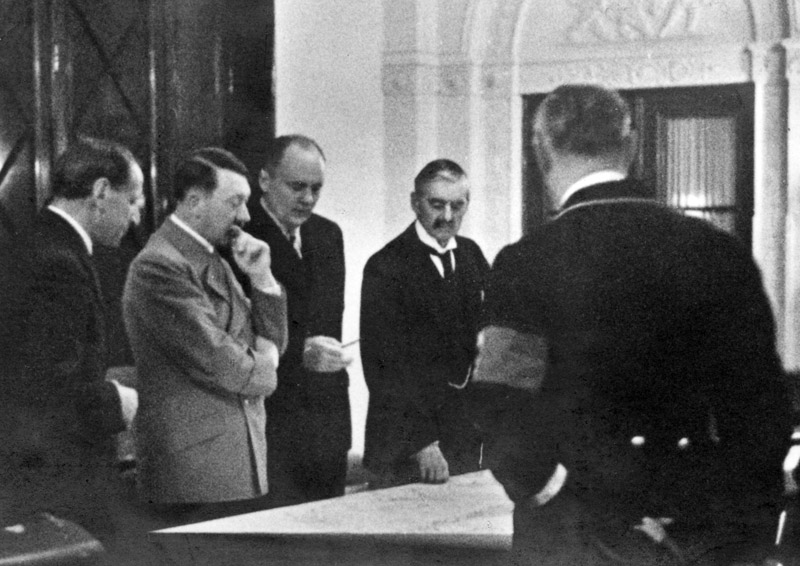
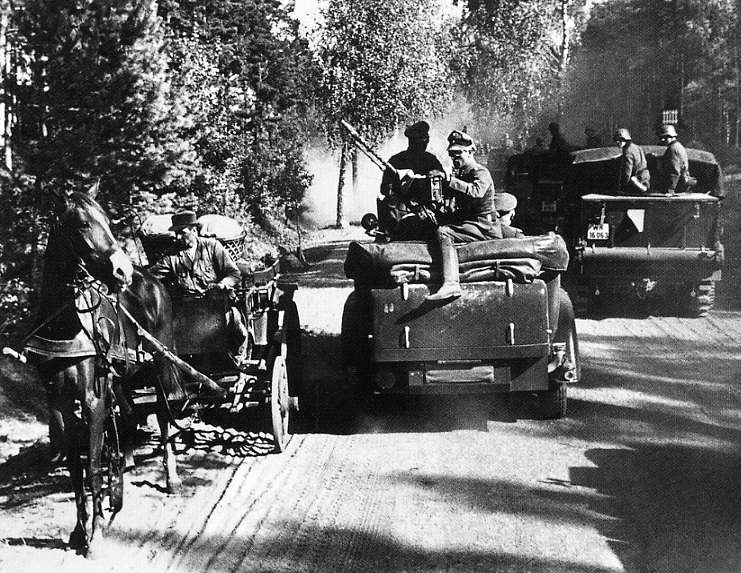
Great post- love to see this kind of thing being done given the current situation.
Cheers,
Pete.